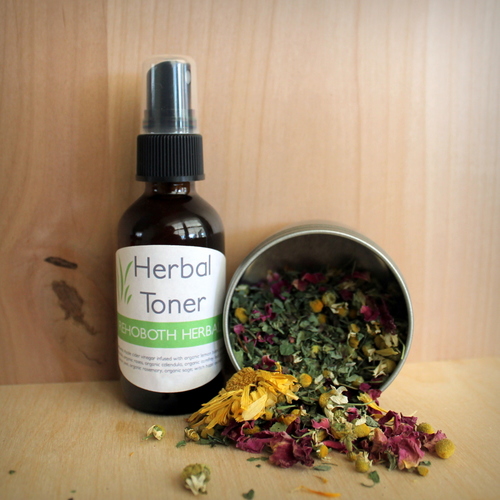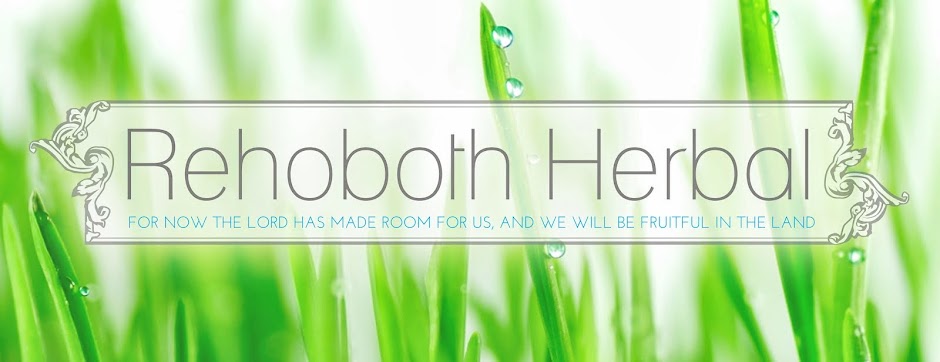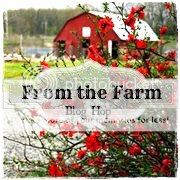I mentioned in my last post about cleansing grains that I recently celebrated my thirty fifth birthday, but I feel like my skin has never looked better. I attribute this to switching to homemade products made with natural, high quality ingredients. I never had really bad skin, but I never would have said I had really good skin either. I was constantly battling a blemish or six. Now I rarely get blemishes anymore, my skin is smoother, my complexion is clearer and brighter, and I'm wearing less makeup than ever before. Most days I skip foundation and concealer entirely and just use a bit of my homemade translucent face powder.
Part of my new skin care regimen is an herbal toner or astringent. An astringent substance is something that shrinks or constricts body tissues. In facial care, toners or astringents are used after cleansing to remove all
traces of dirt and oil, tighten pores, balance pH, and prepare skin for
moisturizing.
Many herbs have astringent properties.
I used a formula found in Rosemary Gladstar's Herbal Recipes For Vibrant Health, so I won't share it here. If you're interested, feel free to look it up. I've found this book to be a good resource. If you'd like to experiment with your own formula, any of the herbs listed above will be effective.
When you've come up with an herb mixture you'd like to try, then you will make a tincture.
1. Fill a wide mouth mason jar about 1/2 to 3/4 full with herb mixture. If using dried herbs, keep in mind that the herbs will swell when liquid is added, so be sure to leave enough room.
2. Cover the herbs by about 2 inches with apple cider vinegar (organic, raw ACV is ideal) or witch hazel.
3. Place the lid on the jar and shake.
4. Put the jar in a warm location, a sunny window is a good spot, and steep for 2 - 4 weeks, shaking at least once daily.
5. Strain the mixture through a fine mesh sieve lined with cheesecloth. Squeeze the cheesecloth to get out all the herby goodness you can.
6. You want your final ratio to be about 1/2 to 1 part vinegar to 1 part witch hazel, so if you tinctured in witch hazel, add vinegar. If you tinctured in vinegar, add witch hazel. If you don't have witch hazel, add distilled water.
7. Add skin loving essential oils like lavender, rose geranium, palmarosa, or carrot seed, if desired. If you have oily skin, rosemary and peppermint are good options.
8. Hydrosols like rose or lavender can also be added or substituted.
9. Label and date the bottle.

Toner should stay good for up to a year. Keeping it from heat and light will prolong its life.
If you're wondering where to get these ingredients, Mountain Rose Herbs
sells high quality herbs and other products, and they are a fair trade
company. (Full disclosure, I do receive a small commission if you click
the links on my blog and complete a purchase.)
If you're not a DIY-er, or you're not up for a another project right now, I do have herbal toner available for purchase in my store.
This post shared at Frugally Sustainable's Frugal Days, Sustainable Ways #78, Sunny Simple Monday, Monday Funday, and
For educational purposes only. This information has not been evaluated by the Food and Drug Administration. This information is not intended to diagnose, treat, cure, or prevent any disease.






